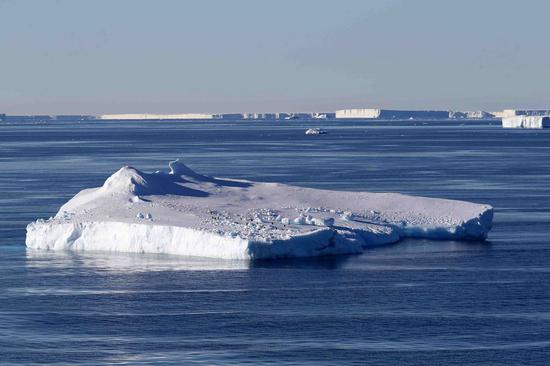
Photo taken on Feb. 15, 2019 shows icebergs in waters near the West Ice Shelf in Antarctica. (Xinhua/Liu Shiping)
November 2019 was the second-hottest November in the 140-year global climate record, according to scientists at the U.S. National Oceanic and Atmospheric Administration (NOAA).
The NOAA monthly global climate report released Monday showed that the average global land and ocean surface temperature for November was 0.92 of a degree Celsius above the 20th-century average, making it the second-highest November temperature on record just shy of that of 2015.
Also, both the autumnal season (September through November) and the year to date (January through November) were the second hottest on record.
The NOAA's data showed that the world's five hottest Novembers have all occurred since 2013, offering strong evidence of the trend of global warming.
The heat was felt at both ends of the world as the sea ice coverage across the Arctic and Antarctic oceans fell to near-record lows in November. Arctic sea ice coverage was 12.8 percent below the 1981-2010 average, and the Antarctic coverage was 6.35 percent below average.
June and July of 2019 were the Earth's hottest months in the 140-year record, according to the NOAA.

















































